The excavation site
This medioeval skeleton, named “burial 52”, was discovered in Old Basing, Hampshire. One femur was found to be fractured and showed signs of chronic infection due to a foreign object becoming lodged in the bone. Although the original extent of the excavation was solely to exhume burial 52, the site turned out to be an area with high density of graves.
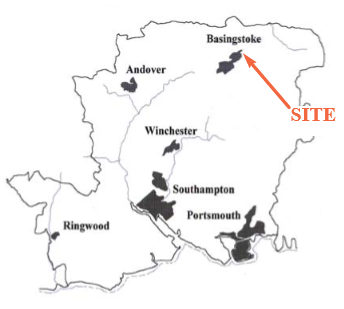
Some general information
The skeleton was found mostly complete, but there are only small amounts of the hands and the foot bones are lacking phalanges. Identification of sex of the individual is hindered by the pelvic area being completely absent; this may have been destroyed because a small portion of terrain directly over it had previously been excavated without archaeological supervision.
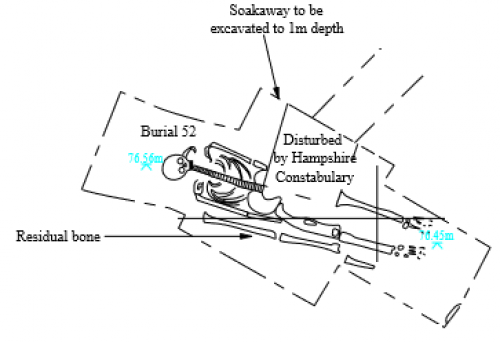
The left femur was also removed and mixed with other bones prior to the start of the excavation; because of the high amount of residual bone in the area, identification of the left femur is uncertain. Preservation of the skeleton is good overall, but there are some elements that are more eroded or breaked during excavation.
Although the absence of the pelvis hinders accurate assessment of the sex, the individual has more male characteristics. An estimate of 1.82m was given for the stature, but this is only an approximation. An estimation of age-at-death of the skeleton can be achieved with more confidence: since there is no wear on the third molars, he must have been quite young. This is confirmed by the post cranial skeleton, where the proximal epiphyses on the humeri are clearly fusing, which gives an estimation of age between 20 years (when fusion begins) and 25 years (when fusion is complete).
The main trauma
The most serious pathology involves the right femur. The original shaft of the bone is broken in two pieces; the break is a spiral fracture indicating a twisting force upon the leg, rotating the femur forcing the proximal shaft forward and the end of the distal shaft backwards, towards the knee. It may be the case that he injured himself in battle or while running away from an enemy or a danger. From the observed angle of break, it is certain that at both points the bone would have broken through the skin enabling bacteria to enter into the wound. It is this infection that caused further pathological infectious changes in the femur.
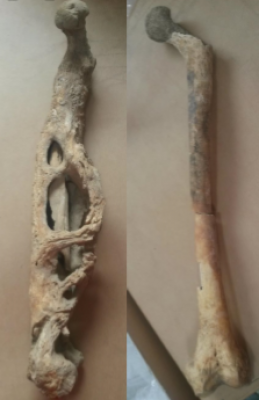
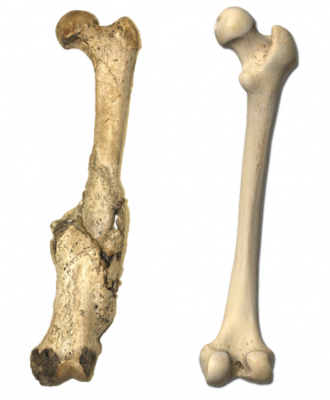
Even in the case where he tried to medicate himself, it is clear that he was not successful in resetting the bone. In injuries of this kind, the bones would normally be reset and the two ends would eventually be joined together. However, this was not the case for the man in consideration; on the contrary, bacteria probably entered the wound, starting a bone infection: the original bone was then superseded by new bone which grew around the fracture, acting as a support for the leg.
From the figure on the right, it is clear that massive infection of the entire area involved both the original bone shaft and the new involucrum. If an infection involves the bone, there is a gradual build up of pus that eventually works its way through the involucrum to the outside of the bone, and possibly outside of the body. For this reason, a number of holes form in the involucrum, which allow the drainage of pus and dead bone.
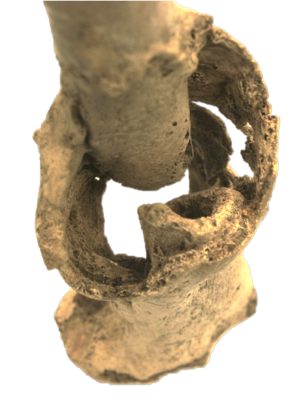
The pathological femur from burial 52 is an example of the dangers of fractures in the preantibiotic age. Compound fractures with infection are associated with high mortality, and it may have been the infection that caused eventual death of the individual. Moreover, other problems may have arised as a result, including decreased mobility and joint problems with the redistribution of weight on joints.